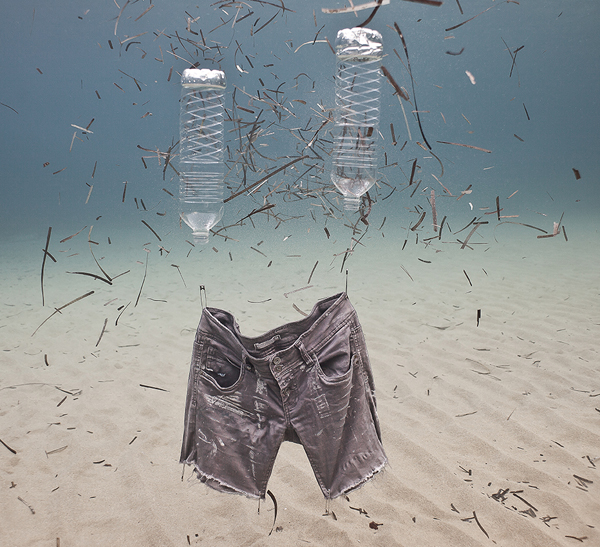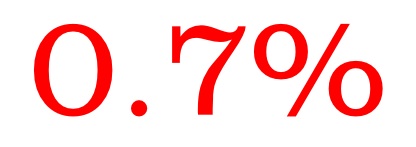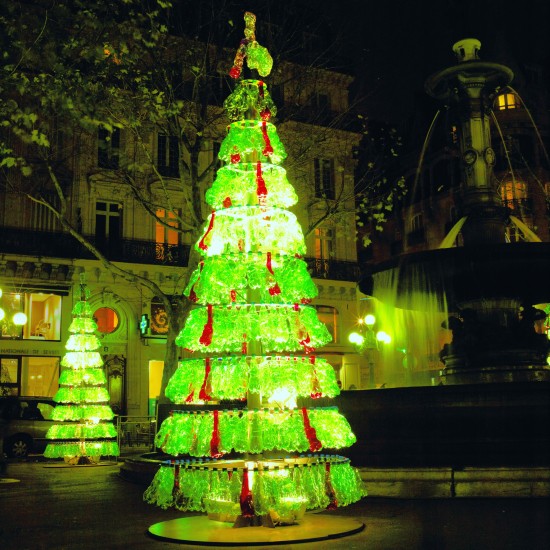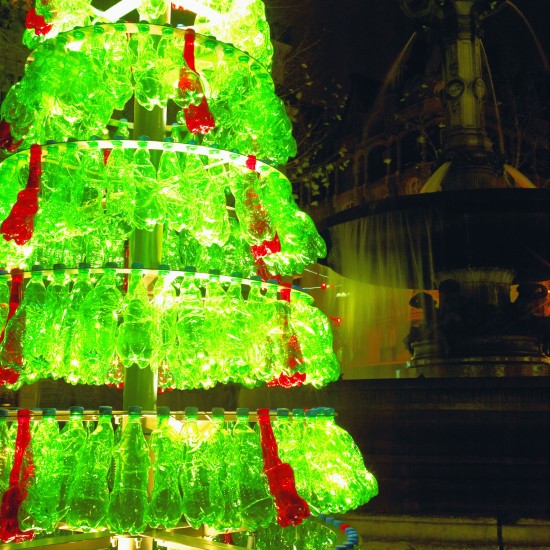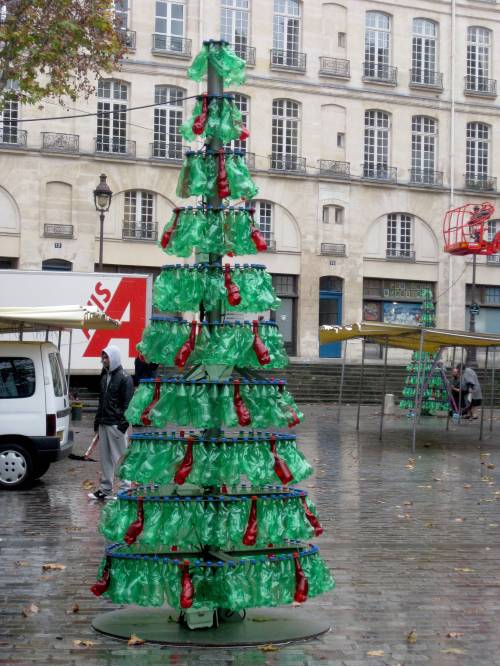Tag: sustainability
March 10, 2013
Still Life a la Renewable Energies
“Photographer Mitch Payne, Designer Kyle Bean and Art Director Gemma Fletcher collaborate on a playful still life project which visually represents different forms of renewable energy. Energy extracted from resources which are continually replenished such as Solar,Nuclear and Wind. Each image depicts a glass tank housing various setups acting as ‘energy sources’ which power a lightbulb. The series includes ‘Geothermal’ where coloured gravel is layered up to represent a cross section through earth and ‘Tidal’ where water is seen dramatically splashing like a giant wave within the glass tank.”
From Stem Agency, via Notcot.org
March 1, 2013
Paper cups, airplane cups, and plastic bottles: When you see the totality of it all, it might just overwhelm you.
I’ve been a fan of Chris Jordon for a while, and although I’ve written about him before in other places, I just realized I don’t actually have him tagged here at Popperfont. Anyway, here’s a sampling for what he does: that is, he takes statistical information and represents it photographically in very powerful ways. I recommend clicking on the links for each image, where you’ll be treated to a zooming effect so that you can see his artwork as if from afar and then moving in.

Plastic Bottles, 2007 60×120″
Depicts two million plastic beverage bottles, the number used in the US every five minutes.

Paper Cups, 2008 60×96″
Depicts 410,000 paper cups, equal to the number of disposable hot-beverage paper cups used in the US every fifteen minutes.

Plastic Cups, 2008 60×90″
Depicts one million plastic cups, the number used on airline flights in the US every six hours.
February 26, 2013
This is what a 30ft high “plastic” bag made out of plastic bags looks like. #whoa
“His current exhibit at Rome’s contemporary art museum MACRO titled Secret Garden includes a nearly 10-meter high, U-shaped installation made of plastic bags and appropriately titled Plastic Bags. The bags are very relevant symbols of both consumerism and homelessness in today’s society.”
By Pascale Marthine Tayou, text via Collabcubed.com
December 21, 2012
They say Christmas is a time for giving, but how much? How about 0.7% or roughly one cup of coffee a day?
(Reprinted and re-edited with more recent statistics from an earlier blog post)
Lately, I’ve been thinking a lot about good old 0.7%. This is the hallmark figure suggested by Pearson as a target for foreign aid to developing nations. In other words, the main idea is that wealthy nations do something nice and set aside about 0.7% of their gross national income, so that the sorts of things that the UN Millennium Development Goals are focused on, can be proactively tackled. It’s all noble stuff: challenging yes, but definitely important in the global context.
Problem is, that not many countries actually do this, and this is why you have people like Bono and Jeff Sachs all in an uproar, etc, etc, etc. For example (based on 2009 stats), the United States puts aside approximately 0.2% of GNI, whereas Canada is only a little better at about 0.3%. Indeed, sometimes a small part of these G7 Summits that happen from time to time is about addressing this specific issue, except that often the agreements in place tend placate to long “statement of intent” type timelines – the sorts of timelines that are much longer than the life of existing elected governments.
Now, there is a lot of good debate about the relative merit and/or problems of going for the 0.7% target, which we won’t go into here, but I thought a good exercise in perspective (for you and I as individuals) is to think about what 0.7% actually looks like.
To do this, I thought a good place to start would be to think about that cup of coffee you probably drink every day.
Let us suppose that the average North American buys a single cup of coffee a day. And also let’s guess that the average price of that coffee sits somewhere around the $1.50 range. This takes into consideration, those who don’t drink coffee, those who can get their coffee cheaper (or for free) at work, those who buy larger sizes, those who buy the fancy coffee drinks, those who choose to also get the muffin – more or less, to say that an average cost of $1.50 per day doesn’t sound too unreasonable. Besides, it’s about what I spend daily on my caffeine perk for instance.
The point is, if you multiply $1.50 by the 365 days, you get a yearly budget of about $550.00. If we take that figure and extrapolate using 0.7% as a hallmark, it means that if you make about $80,000 per year, your coffee expenditure (under these parameters) would be equivalent to that 0.7% benchmark. If you make less than $80,000 or buy more than one cup of coffee a day, then your percentage actually jumps up significantly.
To me, the mental exercise here is to appreciate the relative insignificance of 0.7%, and to juxtapose that to what would happen if we all chose to use that coffee money towards developmental aid.
The answer, of course, is that “a lot of good” would happen. Actually, it’s a little mind boggling when you think about what how a person’s coffee habits and culture indirectly divert from some really serious global issues (rather than preach on what these issues might be, I invite you to take a closer look at the Millenium Development Goals to see what’s at stake).
Anyway, this is not to say that we should feel guilty for grabbing a cup of coffee, but rather to consider what that money might actually represent in the global context. Maybe we should all set up 0.7% collection jars or something – certainly wouldn’t be a bad thing. And probably more so in this holiday season.
December 21, 2012
Sciencegeek Advent Calendar Extravaganza! – Day 21

CHRISTMAS TREES MADE FROM RECYCLED PLASTIC BOTTLES
By Designpack Gallery
(see more of Popperfont’s Sciencegeek Advent Calendar Extravanganza here)
November 20, 2012
This animated gif of city lights turning on is pretty to look at.
By Hajin Bae, aka soulist-aurora, on Tumblr
October 19, 2012
Trash and anti-trash. Lovely image by Dadu Shin
“I had a lot of fun doing this one. This article was about how some people in Kenya are reusing what some might consider trash (like old tires) to create everyday functional things…things that we take for granted here in the US. It’s quite an interesting read. Learn new things everyday in this business.”
By Dadu Shin.
September 25, 2012
William’s Ecological Footprint: an attempt at an environmental children’s book
By DAVID NG
A few years ago, for fun, I took a course on “Writing Books for Children.” It was pretty good, in that it kind of forced me to sit down and come up and work through an idea. Or at least, work through it enough so that it was close to the stage of becoming a proper idea.
My friends already know that children’s books have always fascinated me, especially with two young children in my own household. It’s probably why I’ve written about it on occasion in other places. There’s something altogether amazing when you read a great children’s book to your kids, especially so (for me anyway) when the book has some science in it.
Anyway, shown below is a slideshow of my book idea. It’s basically about a group of animals marvelling at their habitats, considering their own “footprints” so to speak. Then, of course, there’s a bit where they meet a human: whereby the idea of a footprint becomes grossly different.
Apologies for the simplistic art, but I am curious about what you think of the book conceptually. One day, I might even try to edit and tighten it up, so as to submit it somewhere. Although, to be honest, I’m not sure if the idea is good enough and (as the case may be) I’m not even entirely sure where best to send such queries. Still, take a peek, and send on some feedback – it’ll be much appreciated.
September 19, 2012
On consumerism and our need for stuff. Yes, it could lead to Panda Dip.
Reminds me a little of the Jimmy Kimmel iPhone 5 ruse. Man, are we a “just gotta have it, just gotta get it” society…
By Jonathan Rosenberg at Scenes From a Multiverse.
September 19, 2012
This cloud is pretty, interactive and made from 6000 light bulbs #whoa
“The piece is made from 1,000 working lightbulbs on pullchains and an additional 5,000 made from donated burnt out lights donated by the public.”
Called CLOUD, and created by Caitlind r.c. Brown.
June 25, 2012
History of the bicycle in Chinese Matchbox labels.

(Click on image for higher resolution)
From Wackystuff









